St. Peter's Church
St. Peter's Basilica in the Vatican or St. Peter's Basilica is a Renaissance-style church in the Vatican City. This city is a papal city in the city of Rome. St. Peter's Basilica is a Latin term meaning "Basilica Sancti Petri".
-
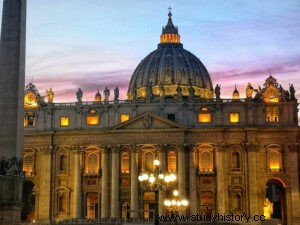
- Credit:https://througheternity.com
History
St. Peter's is a well-known work on the construction of the Renaissance. It is the largest church in the world. Although it is not the mother church of the Catholic Church or the cathedral of the Roman diocese either.
-
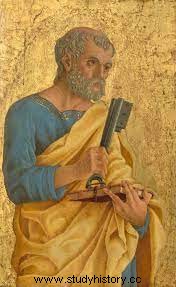
- credit:wikipedia
St. Peter's is considered one of the most sacred Catholic shrines. It has been regarded as "a unique figure in the Christian world" and as "the largest of Christendom's churches". St. Peter's is a Renaissance-style church located in the Vatican City west of the Tiber River and close to Janiculum Hill and Hadus Mausoleum. The central dome dominates high in Rome. The church approaches St. Peter's Square, a porch with two sections, both surrounded by long pieces of cotton. The first room is oval and the second trapezoidal. The basilica façade, with a large number of columns, is easy across the square and is reached by stairs with two 5.55 meter (18.2 ft) statues of the first century Apostles to Rome, Saints Peter and Paul.
The Catholic tradition says that the church is the burial place of Saint Peter, the chief among the apostles of Jesus and the first Roman bishop (pope). Santa Peter's tomb is said to be below the church's highest altar. For this reason alone, many popes have been interviewed in St. Peter's since early Christian times. The church has been in this area since Roman Emperor Constantine the Great. The old St. Peter's Church dates back to the 4th century AD. Construction of the present church began on 18 April 1506 and was completed on 18 November 1626.
architecture
-
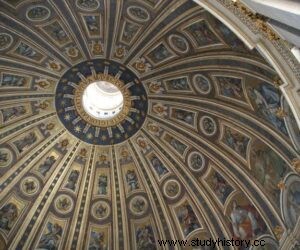
- credit:st-peters-basilica-tickets.com
Pope Julius' program for Christendom's largest building was the subject of a competition in which several exhibitions took place in the Uffizi Gallery, Florence. Donato Bramante designed this and was also chosen. The foundation stone was also laid in 1506. The structure was in the form of a large Greek cross with a dome inspired by the large circular Roman temple, the Pantheon. The main difference between Bramante's design and the Pantheon is that when the Pantheon dome was supported by a continuous wall, the new church would only be supported by the four main pillars. This feature was retained in the final design. Bramante's dome would be torn by tons with its own small dome, but otherwise very similar to the lantern shape Early Renaissance of Florence Cathedral designed for Brunelleschi's dome by Michelozzo.
-
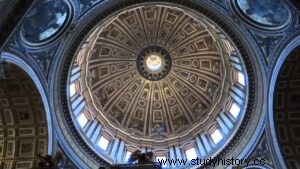
- Credit:https://youtube.com
The inner size is larger compared to other churches. One author wrote:“It's a little clearer - when we see people approaching this monument or miracle, it seems surprising that they are declining; of course a decrease in the proportion of everything in the building. This change overcomes us. "
-

- credit:wikipedia
Michelangelo has taken the place of the building where the four pipes, the largest of which were built from ancient Roman times. And stood up behind the remaining barn of the old church. He inherited many techniques that were designed and redesigned by some of the greatest architectural and engineering thinkers of the 16th century. They all asked for a dome to be equivalent to the one built by Brunelleschi a hundred years ago and now occupying the Upper Renaissance Florence, and they all asked for a similar system of Greek cross shape, such as St. Mark's Church in Venice, or at the Latin Cross with three symbols of the same shape to be eroded.
-
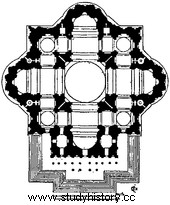
- credit:wikipedia
Dome diameter (from outside):42 meters or 138 feet.
Dome diameter (from the inside):41.5 meters or 136 feet.
Designated in:1984 (8th session)
Western Wall, Jerusalem (Judaism)
-
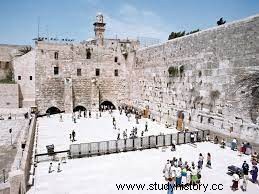
- credit:britanicca.com
The Western Wall of the Old City of Jerusalem is a place of prayer and pilgrimage for the Jewish people. Only the remains of the last wall around the Temple Mount, the site of the first and second temples in Jerusalem, are kept especially sacred by the ancient Jews. The first temple was destroyed by the Babylonians in 587-586 BCE, and the second temple was destroyed by the Romans in 70 AD.
The authenticity of the Western Wall is confirmed by culture, history and archeology. The wall dates back to about the 2nd century BCE and the upper parts have been added one day. The descriptions of wall survival vary, with one suggesting that God preserved the passage for the Jewish people, while another says that Titus left it as a tragic reminder of the Roman conquest of Judea.
-
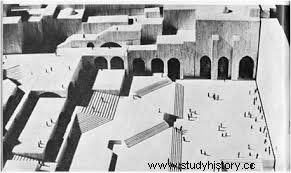
- credit:https://jstor.org
As seen today, the western wall measures 50 meters (160 feet) in height and about 20 feet (60 feet) high; however, the wall extends to the depths of the earth. Jewish religions dating back to the early Byzantine period and confirming the rabbinic belief that "the presence of God will never deviate from the wall." The Jews lamented the destruction of the temple and asked for restoration, and it has long been a matter of pushing pieces of paper with wishes or prayers into cracks in the wall. Names such as the Wailing Wall were coined by European travelers who saw the holy Jews mourn before the rest.
Because the wall is now part of the massive wall around the Islamic rock and the Al-Aqṣā mosque, Jews and Arabs have repeatedly argued for control of the wall and more often the right to enter it. This struggle has been particularly intense since the Israeli government took control of the old city after the war in June 1967.
How do people pray at the west wall?
For many hours a day, the Western Wall is full of people deep in prayer. Many lean forward and touch their foreheads on the stones. With closed eyes they whispered their wishes and kissed the wall when they had finished praying.
-
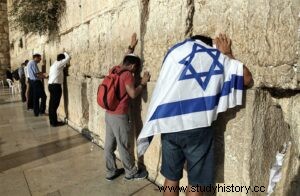
- Credit:middleeasteye
The Great Mosque of Mecca
The Great Mosque in Mecca is also known as Masjid al-Haram. This mosque is the largest Muslim church in the world. It is located in the city of Mecca, around the Kaaba, the place where Muslims around the world turn to daily prayers and is the holiest place for Muslims.
In August 2020, the Grand Mosque was considered the largest mosque and the eighth largest building in the world. The large mosque has been renovated and greatly expanded over the years. It has come under the control of various caliphs, sultans and kings, and is now under the rule of the Saudi king for the two holy mosques.
-
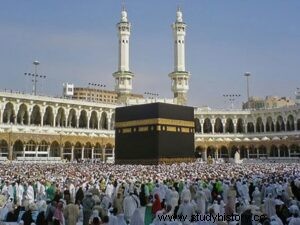
- Credit:https://fireprouk.com
History
The Grand Mosque competes with the Companions Mosque in the Eritrean city of Massawa and the Quba Mosque in Medina as the oldest mosque. According to some scholars, the Islamic tradition in the Qur'an states that the Islamic view of Islam as a religion precedes Muhammad, and represents earlier prophets such as Abraham. Abraham is hailed by Muslims for building the Kaaba in Mecca, and as a result, its sanctuary is considered, from a Muslim point of view, as the first church to exist. According to scholars, Islam originated during Muhammad's time in the 7th century AD, as well as building materials such as. Islamic Church. In that case, the Companions Mosque or the Quba Mosque may be the first church built in Islamic history.
-
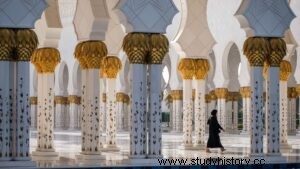
- Credit:https://imb.org
architecture
The Great Mosque was constructed by the Prophet Muhammad. It was the second mosque built by the Prophet Muhammad in Medina, after Masjid Quba. It is now one of the largest temples in the world. It is the second holiest site in Islam, after Masjid al-Haram in Mecca. Although such a mosque has many structural modifications, the building remains an open, often covered area, consisting of mihrab and minbar, with sporadic structures.
-
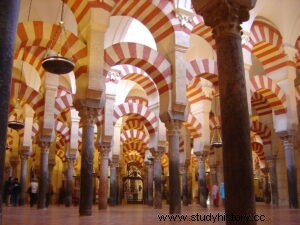
- Credit:https://courses.lumenlearning.com
The Great Mosque in Mecca, Saudi Arabia, has a cube-shaped structure called the Ka - bah (Kaaba) - the holiest site in Islam. Every day, Muslims around the world meet this shrine during prayers. It is one of the places for hajj, a journey that all Muslims should make at least once in their lives, if possible. Millions of worshipers therefore visit the Great Mosque in Mecca every year. The mosque is also called the Holy Mosque or the Haram Mosque. The Arabic name is al-Masjid al-Haram.
-
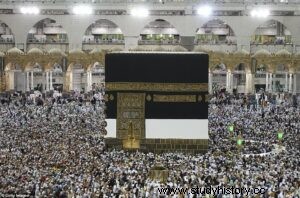
- credit:https://expressdigest.com
The mosque includes a central rectangular courtyard surrounded by covered places of worship. In the courtyard stands the Kabah, made of gray stones and marble. Most of the year, the sanctuary is covered with a large black cloth. Kabah is about 15 feet tall. Measure approximately 15 to 35 feet (40 x 10 feet) on the ground. Kabah is designed so that the corners are almost the same as the compass points. The interior contains nothing but three pillars, which support the ceiling, and many silver and gold pendant lamps. The pilgrims went to Mecca around Kabah seven times.
Frequently Asked Questions:
Q:What are the three holiest places in the world?
A:St. Peter's Basilica, the Western Wall, Jerusalem (Judaism), the Great Mosque in Mecca are the three holiest sites in the world.
Question:Who designed St. Peter's Church?
A:St. Peters was built by famous architects. Donato Bramante, Michelangelo, Carlo Maderno and Gian Lorenzo Bernini were the great architects. St. Peters is also the most famous work in Renaissance architecture. And later it is considered the largest church in the world.
Q:Why is St. Peter's a sacred place?
A:The center of Christianity was founded by the Church of St. Peter of Constantine in the 4th century. And in time, the pope's permanent seat, the Vatican, immediately becomes the Catholic holy city, an important archaeological site for the Roman Empire and one of the great cultural objects.
Question:Which is the world's largest mosque?
A:The Great Mosque, Mecca or Masjid al-Haram is the largest mosque in the world. The city of Mecca incorporates many areas of Islamic history, most notably the Grand Mosque or al-Masjid al-Haram, the global Qibla of Muslims under Umrah and Hajj, as it includes the Prophet Ibrahim Kaaba. Inside the Kaaba, there are three wooden pillars that hold the roof of the Kaaba.
Question:Who can go to Mecca?
A:Only Muslims can travel to Mecca. Non-Muslims are not allowed to travel to Mecca. Even non-Muslims are not allowed to pass through Mecca. There are high restrictions for non-Muslims and they will result in penalties or fines.
Question:When and where was the Great Mosque built?
A:The Great Mosque was built in 1571. There were many renovations and expansions in this mosque. This mosque is located in Saudi Arabia.
Question:Why is the Western Wall famous?
A:The sanctity of the Western Wall in Judaism is a result of its proximity to the Temple Mount. Due to the restrictions on entering the Temple Mount, the wall is the holiest place where Jews are allowed to pray, although the Foundation, the holiest in the Jewish religion, is behind it.
